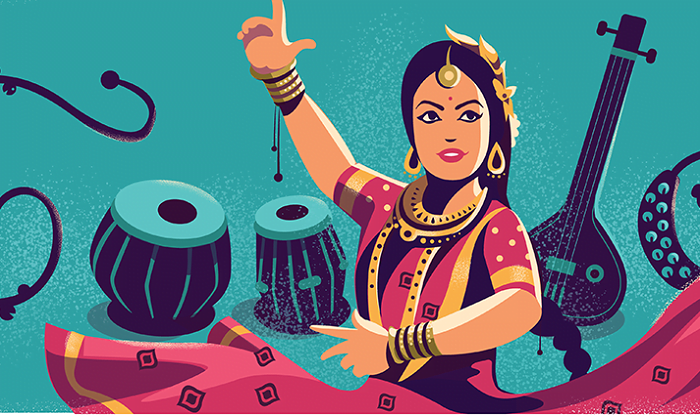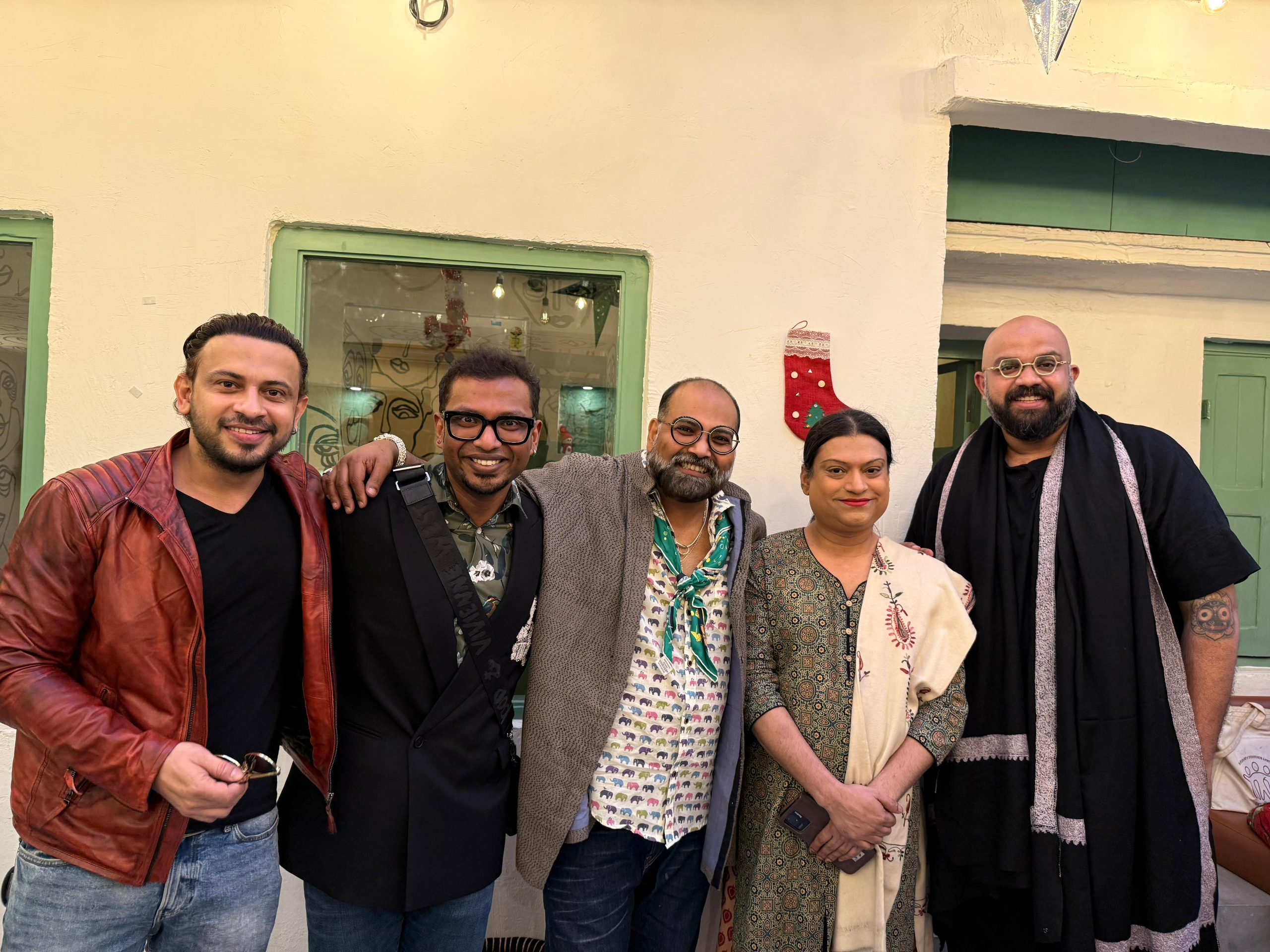To dance is to be out of yourself. Larger, more beautiful, more powerful. This is power, it is glory on earth and it is yours for the taking.
– Agnes de Mille
I was only four when I took my first step into Kathak. I danced till the age of twenty, but I had to pause since my husband did not want me to dance. He felt dancers belong to a category where a human is treated more like a commodity.
Well, I stopped dancing but danced to his rules and regulations of my husband till I could no longer deal with his patriarchal attitude and hostility and broke off from my marriage. He tried his level best to stop me from dancing only to be proved how wrong he is. Dance is what I live for. I am a Kathakar (storyteller), but through dance.
Kathak is one out of the ten major genres of Indian classical dance. The roots emerged from travelling sonneteers of northern India known as Kathakars. Though this particular dance form had its roots dipped in Hindu mythology and were performed by male Kathakars, it became well-known and branched itself into three major gharanas – Jaipur, Lucknow and Banaras.
With ghungroos (bells) adorned on the feet, these three gharanas expressed the rhythmic movement of the torso, facial expressions, acting and footwork. Initially, this dance form was performed in Mughal courts, which declined during the colonial British rule but it proliferated from the courts and moved to concert halls post the end of British in India.
Kathak, which was restricted to men only, changed over the years and was no longer a dance form marginalizing other voices.
The dance, which was restricted to men only, changed over the years and it was no longer a dance form marginalizing other voices. The Kathak maestros no longer felt the need to confine it to only male performers and Hindu mythology. In recent times, it has been predominantly women performing this dance and also representing stories. Some popular examples are Mughal E Azam, Saleem Anarkali, Noorjahan and many more.
https://www.youtube.com/watch?v=6Au_J6jHKE0
I was also national level scholarship holder in genre Kathak and when I would perform, I found only women participants. So where did the masculine sector vanish? Kathak was, according to tradition, to be performed by men, so why did I find only women? Back at that time, my mind was not mature enough to think about the gender dynamics of Kathak, but now it troubles me even more. Apparently, scholarships were brought in to counter the male dominance in Kathak.
Pallavi Chakraborty refers to Kathak and patriarchy in her book Bells of Change: Kathak Dance, Women and Modernity in India. She says, “Public Modernity and Classical Kathak, uses a largely theoretical framework to analyze kathak’s intersections with modernity, hegemony, globalization, and locality”. Chakravorty knits together experiences from her own embodied practice, life stories of professional and amateur women dancers, Indian aesthetic theory and Hindu mythology.
She uses these means to convincingly demonstrate how women in India emerge as “actors who make choices” and as subjects of their own dance while inhabiting the patriarchal domain of the Indian classical dance world. This is the book’s strongest part, combining original fieldwork and theory with an incisive critical thought regarding women’s subjective and individual actions within patriarchal, social and artistic contexts.
Also Read: Bharatanatyam In The Wild: Claiming Our Bodies And Spaces Through Dance
Compared with other genres of classical dance, Kathak is difficult. This is explained by Reshmi Kaur Oberoi: “Kathak is a complete dynamic theatre, not compromised to, but rather co-existed in the dance form which has made many more doors open, outside of the academic life of the dancer; myself. Perhaps ‘Devdas’ was the initial propaganda to popularize it, and perhaps the entrancing chakkars or the intimidating fast footwork, taal, was the spark to ignite a Kathak dancer’s fire. Indeed, that would disguise the artist’s realistic form”.
Like any other dance form, Kathak too has the Navarasas, the nine emotions which are: 1) hasaya (happiness); 2) shoka (sorrow); 3) krodha(anger); 4) karuna (compassion); 5) bhibatsa (disgust); 6) adhbhuta (wonder); 7) bhaya (fear); 8) viram (courage); and 9) shanta(serenity).
As this particular dance was performed in Mughal courts, the term ‘Mujra’ is derived from Kathak. Though the Mujra danseuse never performed any demeaning acts, our patriarchal society still gets the wrong idea. As I ranted earlier, dance is a storytelling process, so the danseuse need to convey the story or Katha through bodily movements such as the movement of the pelvis, breasts and ankles. This misogynist society perceives this notion, including my noble ex-husband, that dancers are not from respectable families and they may be women of questionable characters.
Dance is not everybody’s cup of tea. It is a result of tremendous hard work, dedication and practice. Men may be very excited to see a woman dancing but just know that behind each movement, a woman has practised it at least thousand times to get it right. As mentioned by Reshmi Kaur Oberoi, Kathak is the hardest form as one has to convey the dance through hand gestures and feet work.
dance is a storytelling process, so the danseuse need to convey the story or Katha through bodily movements.
As a danseuse myself, I like to say it to all women dancers, if you find any person treating you as an entertainer, please cut off that malignant tumour. Do not show any mercy, they deserve the door.
Just in case you need a reminder about women Kathak dancers and achievers of the Sangeet Natak Academy Award, I’ll list a few names. Though the numbers are gradually increasing:-
Sitara Devi (1969)
Roshan Kumari (1975)
Rohini Bhate (1979)
Maya Rao (1989)
Malabika Mitra (2010)
Uma Dogra (2014)
In conclusion I say, dance is an art. I need not explain what Kathak is. A person can always Google and educate themselves about Kathak. But I have a message here: one needs to respect the artist and there cannot be any caste or gender-based bigotry in the name of art. The genre Kathak which was only for men is now taken up by women dancers. If anyone questions us why we dance, please say it takes a sharp eye to recognize a gem.
Also Read: Sitara Devi: Introducing Bollywood To Kathak | #IndianWomenInHistory
Featured Image Credit: Google Doodles
About the author(s)
Rimli Bhattacharya works in the corporate sector. She is also a trained Indian Classical Dancer in Kathak and Odissi. Rimli has been awarded a Star Blogger by team Bonobology for her essay “Running a solo Marathon”.




